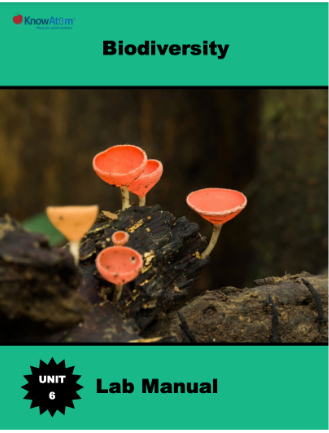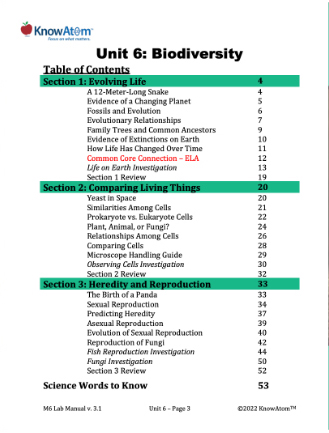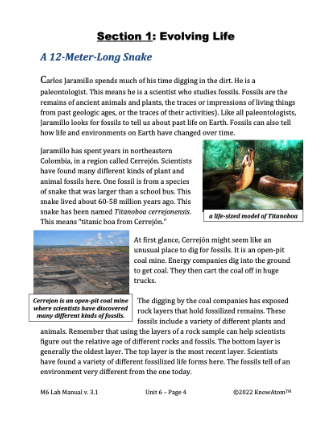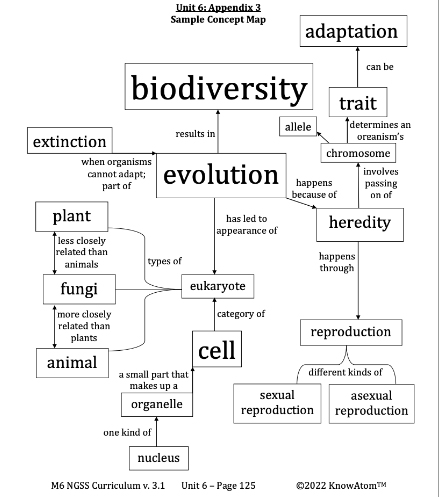The science background section gives teachers more detailed information on the phenomena of biodiversity students explore in this lesson. Below is an excerpt of the science background section from this lesson on the phenomena of inheritance and variation of traits.
Life and the Ability to Reproduce
All life from the single-celled baker’s yeast that bakers add to bread to make it rise to multi-celled humans, have the ability to reproduce. Reproduction is the ability of a mature organism to have offspring. As long as organisms successfully reproduce, they will not become extinct.
There are two forms of reproduction: sexual and asexual reproduction. Sexual reproduction creates offspring with combined genetic information of a male and a female. Asexual reproduction is reproduction that requires only one parent. In sexual reproduction, the combination of genes ensures that each offspring has a different set of traits. To understand how sexual reproduction happens between two organisms, we need to return to DNA.
In the cell, DNA condenses into threadlike structures called chromosomes. Each chromosome is made up of a single DNA molecule, and it holds hundreds or thousands of genes on it. The genes are located on the chromosomes in a very specific way. Because of this, if scientists know where one gene is located, they can find it on anyone’s chromosomes.
Alleles
Both chromosomes in the chromosome pair contain genes that code for the same proteins. These are called alleles. An allele is a form of the same gene that has small differences in the sequence of DNA bases. For example, one allele might have the instructions for proteins that would result in blue eyes, while another allele might have the instructions for proteins that would result in brown eyes.
In sexually reproducing organisms, each parent contributes one allele for each trait. As a result, the offspring have two sources of genetic information, one from each parent. This means they share some traits with each of their parents, but aren’t genetically identical to either one. The genetic diversity caused by sexual reproduction explains why siblings look similar to each other but also have some differences. Part of this has to do with how the two alleles of a gene interact.
Asexual Reproduction
Not all organisms reproduce sexually. Some organisms reproduce asexually. Asexual reproduction is reproduction that requires only one parent. Because just one parent is involved, the offspring inherit 100 percent of their genetic information from that one parent. This means that the offspring are identical or almost identical to each other and to the parent.
All prokaryotes reproduce asexually. Bacteria are a good example of this. Adult bacteria make a complete copy of their chromosomes and then pass on that exact copy to their offspring.
Yeast are single-celled fungi that reproduce asexually by budding. A bud appears on the parent cell and receives nutrients from the parent until it is fully mature. The bud then breaks off and becomes a unique individual with the same genes as its parent.
Fragmentation is another form of asexual reproduction where a new individual develops from a part of a parent that broke off and regenerated into a complete organism. Some sea stars and flatworms can reproduce this way.
The Evolution of Sexual Reproduction
The earliest life forms reproduced asexually, and many bacteria and other prokaryotes continue to reproduce this way. However, more than 99 percent of multi-celled organisms reproduce sexually. Almost every animal reproduces sexually, although some can also reproduce asexually. Some plants and fungi can also reproduce both ways. We’ll explore this idea a little later.
For scientists who are interested in how different traits have evolved, the fact that so many species reproduce sexually tells them something important: sexual reproduction has an evolutionary advantage. In other words, among some species, it makes organisms more likely to successfully reproduce and pass along their genetic information to their offspring.
This interests scientists because asexual reproduction is much more efficient than sexual reproduction. Organisms don’t have to spend a lot of time or energy looking for a mate. This means reproduction can happen very quickly. For example, bacteria can reproduce several times per hour, producing large populations in a very short period of time. Organisms can also pass along 100 percent of their genes, rather than having to pass along only half of their genes.
For many years, scientists had a hypothesis about the evolutionary advantage of sexual reproduction. They thought that the genetic variation of sexual reproduction made species more able to adapt to changes in their environment. This would make them more likely to survive as a species. According to this hypothesis, if some individuals had traits that could help them survive in a changed environment, those individuals would be able to survive and reproduce even if other individuals couldn’t survive.
But scientists didn’t have evidence to support that hypothesis. In recent years, scientists have been conducting experiments to help them answer the question of why sexual reproduction is so useful.








